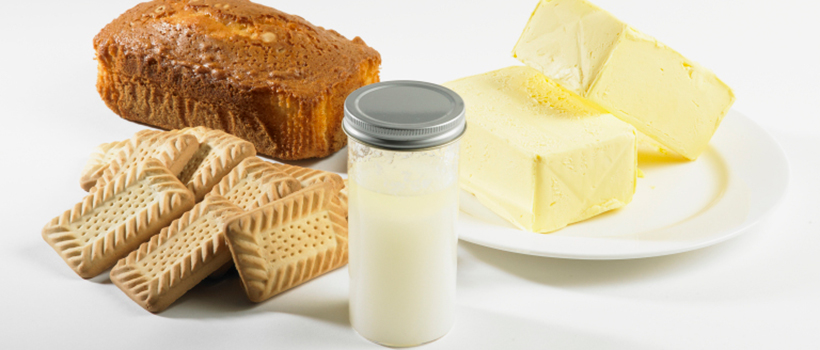
How can enzymes make baked goods healthier?
2 October 2017 | Gary Tucker, Fellow and Sarab Sahi, Rheology and Texture Section Manager
The baking industry faces many challenges in providing products that meet the needs of modern consumers, especially since baked goods are often seen as indulgent, with high levels of fat and sugar. Government targets have led to a reduction in the amount of fat, sugar and additives used in manufacturing, but consumer demand has also created a desire for more clean-label products.
Replacing additives
Additives perform a specific function in the final product and are typically used to ensure safety and quality throughout shelf-life. However, they must be legally listed as an ingredient and their associated E-numbers and chemical names can be off-putting for consumers.
In contrast, processing aids have a role to play in the process, but not in the final product. Such materials are often destroyed or removed during processing and therefore don’t need to be included on the label (e.g. enzymes are destroyed by the high temperatures used in baking). Replacing an additive with a processing aid can help bakers to create a highly desirable clean label product.
What are enzymes?
Enzymes are proteins that act as natural biological catalysts. They speed up and improve the chemical reactions in the baking process and are now seen as vital processing aids. They are used in small quantities to manage water movement during dough processing as well as to improve crumb softness. Ensuring that the conditions are favourable (e.g. optimum temperature and pH) can even reduce the quantity of enzyme required.
Fat, sugar and fibre
Fats contribute to the final product texture and shelf life and also help the dough soften and move without sticking to surfaces. If the amount of fat is reduced, then other ingredients need to be added to mimic its functional roles. Emulsifiers can achieve this, but they would need to be added to the ingredient list. One solution is the use of lipase enzymes, which can generate emulsifier-like materials in situ.
Sugar has several important roles in baking, such as providing colour, taste, retaining moisture, controlling viscosity and influencing setting temperature. Despite this, sugar reduction is still a priority for many bakers. Amylase enzymes can help to create fermentable sugars to control the yeast activity in bread dough without the need for added sugar. This can also provide flavour and help the crust to brown.
Many bakers are aiming to increase fibre content due to its health benefits, but fibres such as wheat bran absorb a lot of water and can lead to poor quality bread. Xylanase enzymes can break down the fibre and release sugars and water to help soften the dough. They may also help to increase soluble fibre content, which could have additional benefits (e.g. promoting the growth of beneficial microorganisms in the body).
Looking forwards
We may eventually see significant changes in the way enzymes are used for food manufacturing. Regardless of the changing regulatory environment, enzymes used as processing aids are a ‘must have’ in a competitive marketplace.
We have been helping clients to use enzymes for manufacturing baked goods for many years. To discuss how they can optimise your process, please get in touch.
How can we help you?
If you’d like to find out more about baking with enzymes, contact our support team to find out how we can help.
Are you a Campden BRI member who attends the MIG meetings?
- If not, you’re missing out on a whole host of exclusive benefits such as learning from industry-leading experts and networking with peers to overcome your challenges.






